Tribe Cassieae | Genus Senna Rank Species | |
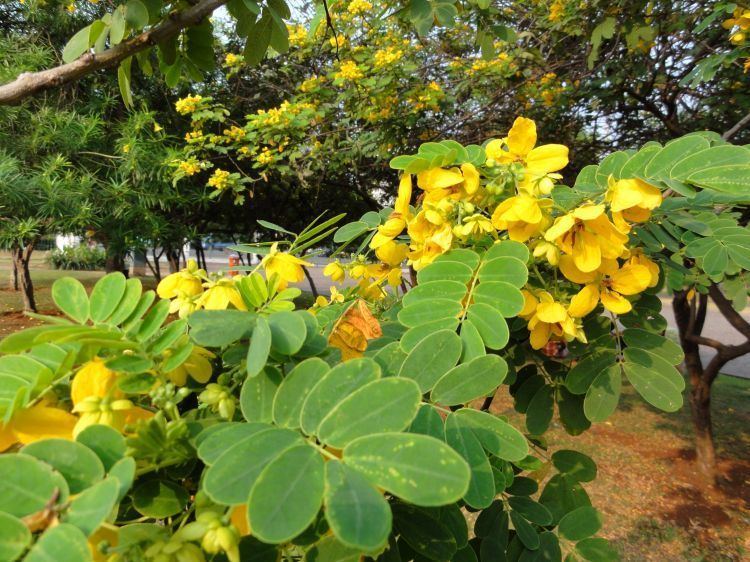 | ||
Similar Senna, Cassia, Cascara buckthorn, Frangula alnus, Rhubarb | ||
Senna alexandrina (Alexandrian senna, in Arabic عشرج or عشرق and see below) is an ornamental plant in the genus Senna. It is used in herbalism. It grows natively in upper Egypt, especially in the Nubian region, and near Khartoum (Sudan), where it is cultivated commercially. It is also grown elsewhere, notably in India and Somalia.
Contents
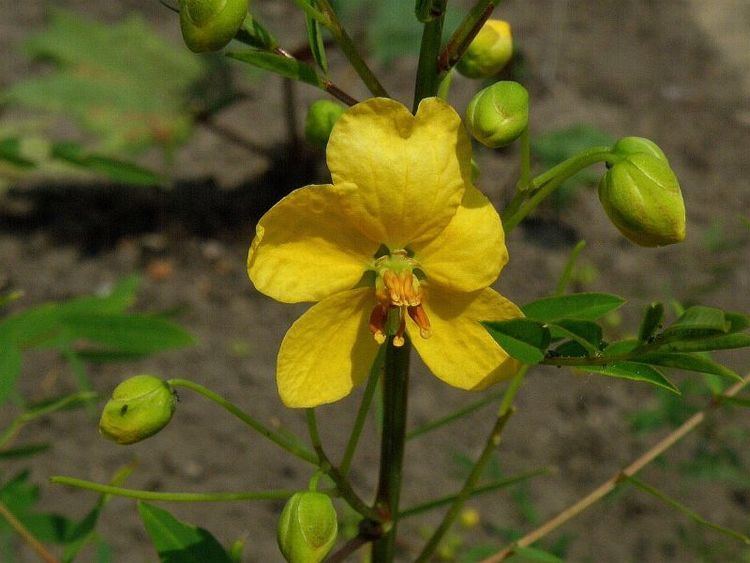
Alexandrian Senna is a shrubby plant that reaches 0.5–1, rarely two, metres in height with a branched, pale-green erect stem and long spreading branches bearing four or five pairs of leaves. These leaves form complex, feathery, mutual pairs. The leaflets vary from 4 to 6 pairs, fully edged, with a sharp top. The midribs are equally divided at the base of the leaflets. The flowers are in a raceme interior blossoms, big in size, coloured yellow that tends to brown. Its legume fruit are horned, broadly oblong, compressed and flat and contain about six seeds.
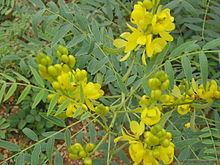
When cultured, the plants are cut down semi-annually, dried in the sun, stripped and packed in palm-leaf bags. They are then sent on camels to Essouan and Darao, then down the Nile to Cairo or else to Red Sea ports. For the nomadic Ababda, for example, trade in senna provides a significant source of income.
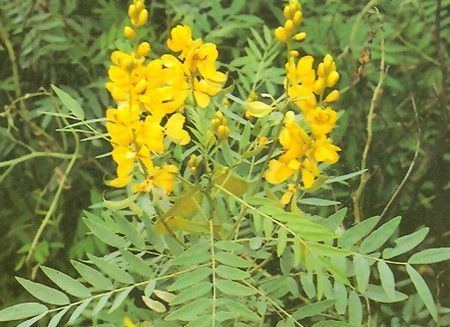
Names and taxonomy
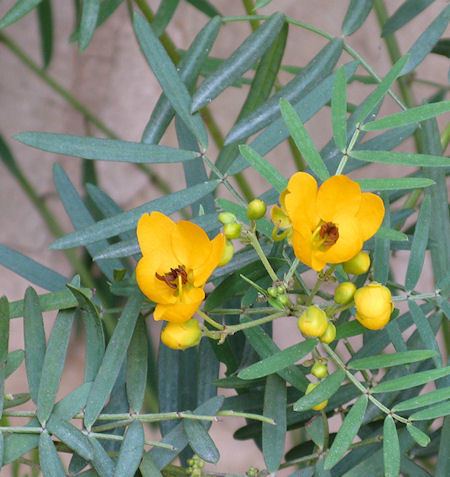
Senna alexandrina is also known under the names Egyptian senna, Tinnevelly senna, East Indian senna or the French séné de la palthe

It received the names "Alexandrian senna" and "Egyptian senna" because Alexandria in Egypt was the main trade port in past times. The fruits and leaves were transported from Nubia and Sudan and other places to Alexandria, then from it and across the Mediterranean sea to Europe and adjacent Asia.

Though it might look like a scientific name, Cassia Officinalis is actually the apothecary term for this plant, and hence Officinalis—the Latin adjective denoting tools, utensils and medical compounds—is written with an initial upper-case letter, unlike specific epithets, which are always written with an initial lower-case letter today.
Synonyms:
Medicinal use
Historically, Senna alexandrina was used in the form of senna pods, or as herbal tea made from the leaves, as a laxative.
Modern medicine has used extracts since at least the 1950s as a laxative. If accidentally ingested by infants, it can cause side effects such as severe diaper rash. The active ingredients are several senna glycosides which interact with immune cells in the colon.
